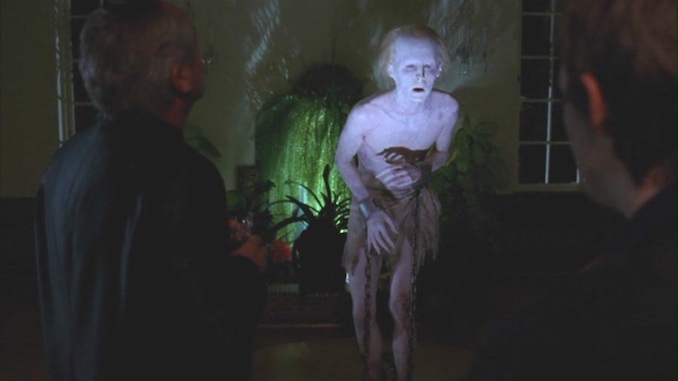TV Rewind: How Masters of Horror Sought to Give the Genre’s Legends the Respect They Deserve
Photo Courtesy of Showtime
Editor’s Note: Welcome to our TV Rewind column! The Paste writers are diving into the streaming catalogue to discuss some of our favorite classic series as well as great shows we’re watching for the first time. Come relive your TV past with us, or discover what should be your next binge watch below:
![]()
By 2005, the horror directors and creators who had defined the ‘70s and ‘80s had become noticeably less prolific. Halloween director John Carpenter had gone into pseudo-retirement following Hollywood burnout. None of Texas Chain Saw Massacre director Tobe Hooper’s efforts in the aughts received a wide theatrical release. Suspiria director Dario Argento’s had suffered from poor critical reception, and Gremlins director Joe Dante described his time working on the 2003 box office bomb Looney Tunes: Back In Action as “the longest year and a half of my life.”
Enter Mick Garris. Garris, a director and longtime champion of the horror genre, began organizing group dinners in 2002. These gave horror writers, directors, and producers a chance to get together, reminisce, shoot the shit, and celebrate the impact they’d had on cinema. Guillermo del Toro would deem them the “Masters of Horror,” an informal moniker that in a few years would become the title of a 2005 Showtime anthology series that Garris produced. With a decent budget and less censorship, Masters of Horror promised these creators a chance to tell stories with a freer range than they’d been granted in recent years.
Was it a return to form for these lauded staples of horror? Or was it a mess that often resulted in half-cocked ideas and disappointing narratives? Eh, a little of both, honestly. To go into Masters of Horror expecting consecutive holes-in-one from some of the most famous names that the genre has ever seen is misguided. Instead, what’s on display seems to be—much like the dinners that the series was named after—a chance for these creatives to play around in a horror setting after many critics had deemed them “past their prime.”
There is some very effective stuff to be found, though, throughout: The first knockout of the series is offered by Dario Argento with “Jenifer,” a disturbing story of a police officer who rescues a disfigured young woman and eventually takes her home with him. Seduced by “Jenifer” in siren fashion, he soon abandons his entire family as his lust grows alongside Jenifer’s murderous tendencies. It’s a violent plot that allows Argento to return to his common motif of dreamy, psychosexual nightmares.
Another Season 1 highlight is “Cigarette Burns,” the first of two episodes that John Carpenter directed for the show. In a hallucinatory journey which sees The Walking Dead star Norman Reedus searching for a lost snuff film that drove its theatrical audience to riotous madness, Carpenter returns to the ideas of creation and psychosis, themes that he’d previously explored in the underrated In The Mouth Of Madness. Other notable entries in the first season include Don Coscarelli’s solid “Incidents On and Off a Mountain Road,” Tobe Hooper’s nihilistic and anti-capitalist “Dance of the Dead,” Lucky McKee’s delightful “Sick Girl,” and Larry Cohen’s stripped down, brutal “Pick Me Up.”
But it’s at the end of the first season that Masters of Horror delivers the bloody feather in its cap. Japanese auteur Takashi Miike, known globally for transgressive masterpieces like Audition and Ichi the Killer, turned in his own episode with “Imprint.”
The episode would never air on American television.